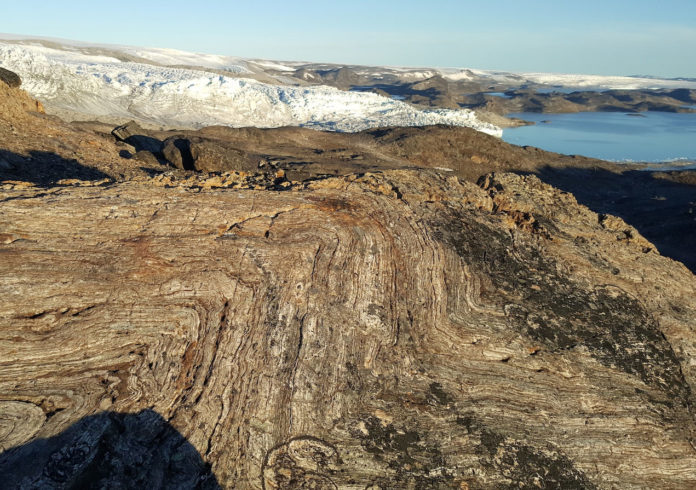An international team of geologists—drove by the University of Cologne and UNSW researchers—have recently found a clue about the beginning of oceans and life on Earth: they have discovered proof that a large proportion of the elements that are essential to the formation of oceans and life, for example, water, carbon, and nitrogen—just came to Earth exceptionally late in its history.
The study had shown that most of the water only came to Earth when its formation was almost complete.
Dr. Mario Fischer-Gödde from the Institute of Geology and Mineralogy at the University of Cologne, who led the work, says we are now able to narrow down the timeframe more precisely.
Scientists analyzed ancient rocks from Greenland, the oldest preserved mantle rocks. Examining rocks allowed them to see into the early history of the Earth as if through a window.
They compared the composition of the oldest, approximately 3.8 billion-year-old, mantle rocks from the Archean Eon with the composition of the asteroids from which they formed, and with the composition of the Earth’s mantle today.
Next, scientists comprehend the temporal process by determining the isotope abundances of a very rare platinum metal called ruthenium, which the Archean mantle of the Earth contained.
Like a genetic fingerprint, the rare platinum metal is an indicator of the late growth phase of the Earth.
Professor Fischer-Gödde said, “Platinum metals like ruthenium have an extremely high tendency to combine with iron. Therefore, when the Earth formed, ruthenium must have been completely discharged into the Earth’s metallic core.”
Professor Martin Van Kranendonk, the UNSW scientist who was part of the research, says the reason why this is of such interest relates directly to understanding the origins of life on Earth, how we humans came to be, and in fact, to whether we might be alone, or have neighbors in the universe.
He said, “This is because the results show that Earth did not become a habitable planet until relatively late in its accretionary history.”
If you combine this with the evidence for very ancient life on Earth, it reveals that life got started on our planet surprisingly quickly, within only a few hundred million years. Now, this might sound like a lot of time, and it is, but it is far different from what we used to think, that life took half a billion, or even a billion years to get started.”
And this gives hope for finding life on other planets that had a shorter geological history and period of ‘warm and wet’ conditions than Earth, because if life could get started quickly here, then perhaps it got started elsewhere rapidly.”
Professor Dr. Carsten Münker, also at the University of Cologne, added: “The fact that we are still finding traces of rare platinum metals in the Earth’s mantle means that we can assume they were only added after the formation of the core was completed—they were certainly the result of later collisions of the Earth with asteroids or smaller planetesimals.”
Professor Fischer-Gödde said, “Our findings suggest that water and other volatile elements such as carbon and nitrogen did indeed arrive on Earth very late in the ‘late veneer’ phase.”
The study was conducted in collaboration between scientists from Germany, Denmark, England, Australia, and Japan. Scientists are now planning further field trips to India, northwestern Australia, and Greenland to investigate more rock samples.
